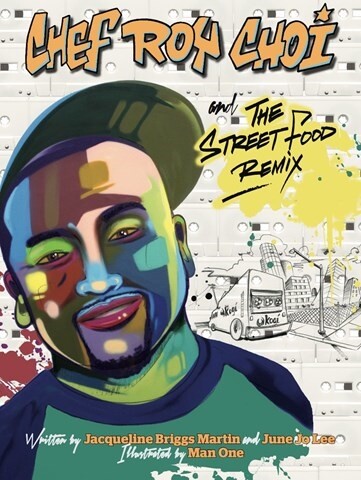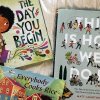12 Children's Books to Celebrate Asian American Pacific Islander Heritage

Editor's note: The author of this article is also the author of a resource listed below.
Too often, Asian American Pacific Islanders are either missing from children's books or are depicted using narrow stereotypes. However, all children should be able to see themselves represented in the stories they read and should also see characters who are different from them.
The rise in violent attacks against Asian Americans of late has marked the need for Americans of all ages and ethnicities to learn more about the history of these communities.
In an interview with the Smithsonian Asian Pacific American Center, anti-bias educator and elementary teacher Liz Kleinrock encouraged teachers to think about how they are presenting Asian American history. She reminded educators that "all students need to form positive self-identities and respect those of others." To help with this goal, Kleinrock urged teachers to first explore the resilience, culture and contributions of Asian Americans before starting to talk about hate and violence.
So this May, during Asian American and Pacific Islander Heritage Month (and all year), let's work to deepen our knowledge of the AAPI community so we can become allies in the fight for peace and justice for everyone.
Here are 12 books for preschool and elementary-age children that offer positive, diverse representations of Asian American Pacific Islander history and culture.
"Eyes that Kiss in the Corners" (Ages 3-7)
Written by Joanna Ho and illustrated by Dung Ho

In this moving book, a young Asian girl talks about what makes her eyes special and how they connect her to the other members of her family. Her eyes "kiss in the corners and glow like warm tea." At bedtime, her mother's eyes "tell me I'm a miracle." Though her Amah (grandma) can't see the same way she used to, her eyes are filled with stories.
Eurocentric beauty standards have caused many Asian children to feel ashamed of their eyes and non-Asian children to engage in racist teasing. This book is a must-read to affirm Asian American children's identities and expand all children's ideas of what is beautiful.
"Dear Juno" (Ages 4-8)
Written by Soyung Pak and illustrated by Susan Kathleen Hartung

Juno's grandmother lives in Korea and writes to him often. When her latest letter arrives, he's eager for his parents to translate it. They promise they'll read it to him later, but Juno can't wait. After opening the letter, he realizes that he can't understand most of the letter, except the picture of a cat and the dried flower she's included.
Juno wants to write his grandmother a letter without his parents' help. Soon, they are regular penpals, each writing in their own language.
“Suki’s Kimono” (Ages 4-8)
Written by Chieri Uegaki and illustrated by Stéphane Jorisch

It's the first day of school, and Suki wants to wear the kimono her grandmother gave her over the summer. Her older sisters warn her that people will laugh, but Suki doesn't care.
At school, her friend Penny asks why she's dressed funny, but Suki simply tells Penny she's not dressed funny. Other children are more mean than curious, but Suki sits tall in her seat, with the same dignity her obāchan (grandma) has.
When she has the chance to introduce herself to the class, Suki is so excited to talk about her kimono that she even imitates the dancing she saw at the festival she attended with obāchan. What will her teacher and classmates do after that introduction?
"Drawn Together" (Ages 4-8)
Written by Minh Lȇ and illustrated by Dan Santat

When a young Vietnamese American boy arrives at his grandfather's house, the two struggle to make a connection. The boy doesn't speak Vietnamese, and his grandfather doesn't speak English, so how can they communicate?
Elaborate illustrations show the pair experiencing both boredom and frustration as the morning goes on. Can they find a way to tell each other stories that go beyond words?
Don't be surprised if the stunning art in this book inspires children to pick up a pencil and start drawing!
"Mama's Saris" (Ages 4-9)
Written by Pooja Makhijani and illustrated by Elena Gomez
This book is out of print. Check your local library for copies.

Like many children, the star of this book is frustrated when her mother tells her she's not old enough to do something. After all, it's her seventh birthday, and she doesn't even use a nightlight anymore! For her special birthday celebration, she wants to wear a sari, just like Mama will.
Mama has so many beautiful saris to choose from, and she lets the girl pick which one she should wear for the party. However, that's no substitute for being able to wear one of Mama's saris to her birthday party. Will Mama see that she's big enough to wear one of the vibrantly colored dresses?
"Ling and Ting: Not Exactly the Same!" (Ages 5-7)
By Grace Ling

This laugh-out-loud chapter book about a pair of twins is perfect for early readers. Everyone tells Ling and Ting that they're exactly the same, which just isn't true.
Ting's forgetfulness leads to several funny moments in the book, while pragmatic Ling usually solves problems. While they're not exactly the same, the sisters agree on who they want to spend their time with: Each other.
"You Can Do It, Yasmin!" (Ages 5-8)
Written by Saadia Faruqi and illustrated by Hatem Aly

The Yasmin series is perfect for children who want to read chapter books but still prefer lots of illustrations and short chapters. This volume combines several shorter Yasmin books and shows her learning new things like soccer (even when she's afraid she might get hurt) and gardening (which requires her to use her problem-solving skills.)
From navigating new friendships to figuring out a tricky school assignment, Yasmin shows kids what can happen when we stretch ourselves and try new things.
"Chef Roy Choi and the Street Food Remix" (Ages 5-9)
Written by Jacqueline Briggs Martin and June Jo Lee and illustrated by Man One

Renowned Chef Roy Choi spent a lot of his childhood in his family's Korean restaurant in Los Angeles. He looked forward to making dumplings by hand with his parents each afternoon a lot more than he did school.
Once high school was over, Roy struggled to figure out his path in life. Because of his love for food, he eventually became a chef at a high-end restaurant. The pressures of the job were overwhelming. After losing that job, a friend encouraged him to start a new kind of taco truck that incorporated his passion for Korean barbeque.
His Kogi food trucks didn't take off right away but eventually became a fixture of Los Angeles. Chef Roy then made it his mission to bring "soulful fast food" restaurants to L.A. neighborhoods that needed both good jobs and quality food.
"The Fearless Flights of Hazel Ying Lee" (Ages 5-9)
Written by Julie Leung and illustrated by Julie Kwon

Hazel Ying Lee refused to accept the barriers that others put up for her as a Chinese American woman living in the first half of the 20th century. She dreamed of flight school, which her mother couldn't understand. Hazel dealt with the indignities of working an "invisible job" as an elevator operator to earn the money she needed for school.
After completing flight school, people told her that no one would want to hire her as a pilot. Once the U.S. entered World War II, that was no longer the case. Hazel was one of the first to sign up for the U.S. military's new Women Airforce Service Pilots program.
Though the women pilots weren't allowed to fly combat missions, they risked great danger testing airplanes that were fresh off assembly lines. Hazel died in a plane collision in 1944, but her indomitable spirit continues to inspire people today.
"The Most Beautiful Thing" (Ages 5-9)
Written by Kao Kalia Yang and illustrated by Khoa Le

Don't be surprised if you find yourself tearing up a bit while reading this lovely and true story about the author's childhood as a Hmong refugee. Her parents and grandmother had much love to offer, while money was always in short supply.
Some children may be surprised that the girl considers it an honor to take care of her elderly grandmother, including clipping her toenails. Grandmother's stories about her childhood are both riveting and sad, as she braved danger to care for her younger siblings.
The girl is usually willing to go along with her family's sacrifices because they are poor, like eating ice cubes instead of ice cream. But when she grows tired of looking at her crooked teeth, she asks her parents for braces. Her grandmother helps her understand that she doesn't have to have straight teeth to be beautiful.
"Fish for Jimmy: Inspired by One Family's Experience in a Japanese American Internment Camp" (Ages 6-10)
By Katie Yamasaki

This dramatic story is based on the author's family's real experiences of being imprisoned and interned during World War II because of racism against Japanese Americans.
One of young Jimmy's favorite things about California is the ocean, and he loves to swim there with his brother, Taro. When Father is taken to prison by the FBI, everything about their pleasant life changes. Soon Mother, Taro and Jimmy are taken from their home and sent to an internment camp.
Jimmy refuses to eat or play with the other children. Taro and Mother worry as nothing brings a smile to Jimmy's face. When Taro spots a hole in the internment camp fence, he sets out to find something that will remind Jimmy of their life before this terrible time.
"Asian-Americans Who Inspire Us" (Ages 6-10)
Written by Analiza Quiroz Wolf and illustrated by Tuire Siiriainen

This playfully illustrated guide profiles 15 Asian Americans from various fields who have made major contributions to U.S. history. Margaret Chung faced racist and sexist barriers as the first Chinese American doctor, yet her special care for World War II soldiers led to a comic book being written about her!
Filipino Americans Larry Itliong and Philip Vera Cruz inspired California farmworkers to go on strike and worked alongside César Chávez. Sal Khan left behind a successful banking career to help children learn math through his online Khan Academy (something many kids have taken advantage of during the pandemic).
This accessible collection of profiles is written in kid-friendly, engaging language with plenty of illustrations accompanying each inspiring figure.
More resources for exploring Asian Pacific American history and heritage with children:
- Dr. Noreen Naseem Rodríguez provides a presentation for educators on teaching Asian American history through children's literature
- Pragmatic Mom recommends books about Asian Pacific American women in history
- ¡Colorín colorado! has a variety of children's book lists on Asian Pacific American heritage
- Anti-bias educatorLiz Kleinrock shares how she discussed Asian American identity with her sixth-grade students in the days after the attacks against Asian Americans in Atlanta.
- Find online profiles of Asian Pacific Americans in history from the Zinn Education Project.
- RebekahGienapp.com has tips and book recommendations for talking with children about anti-Asian racism.









